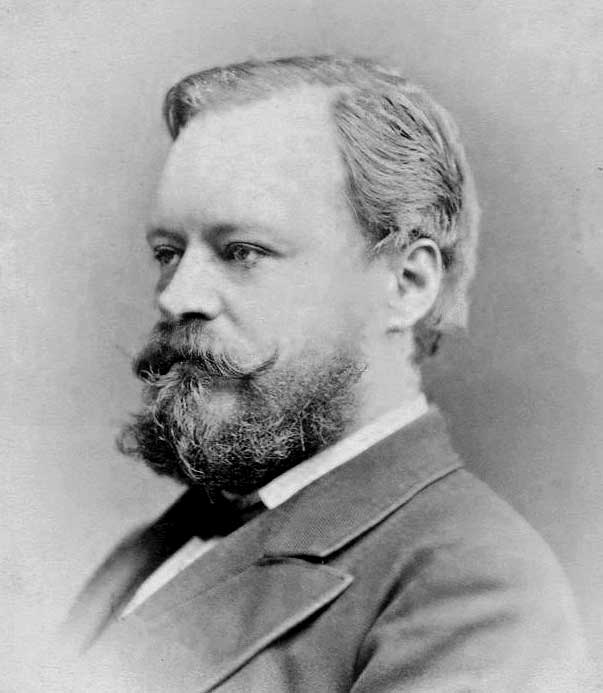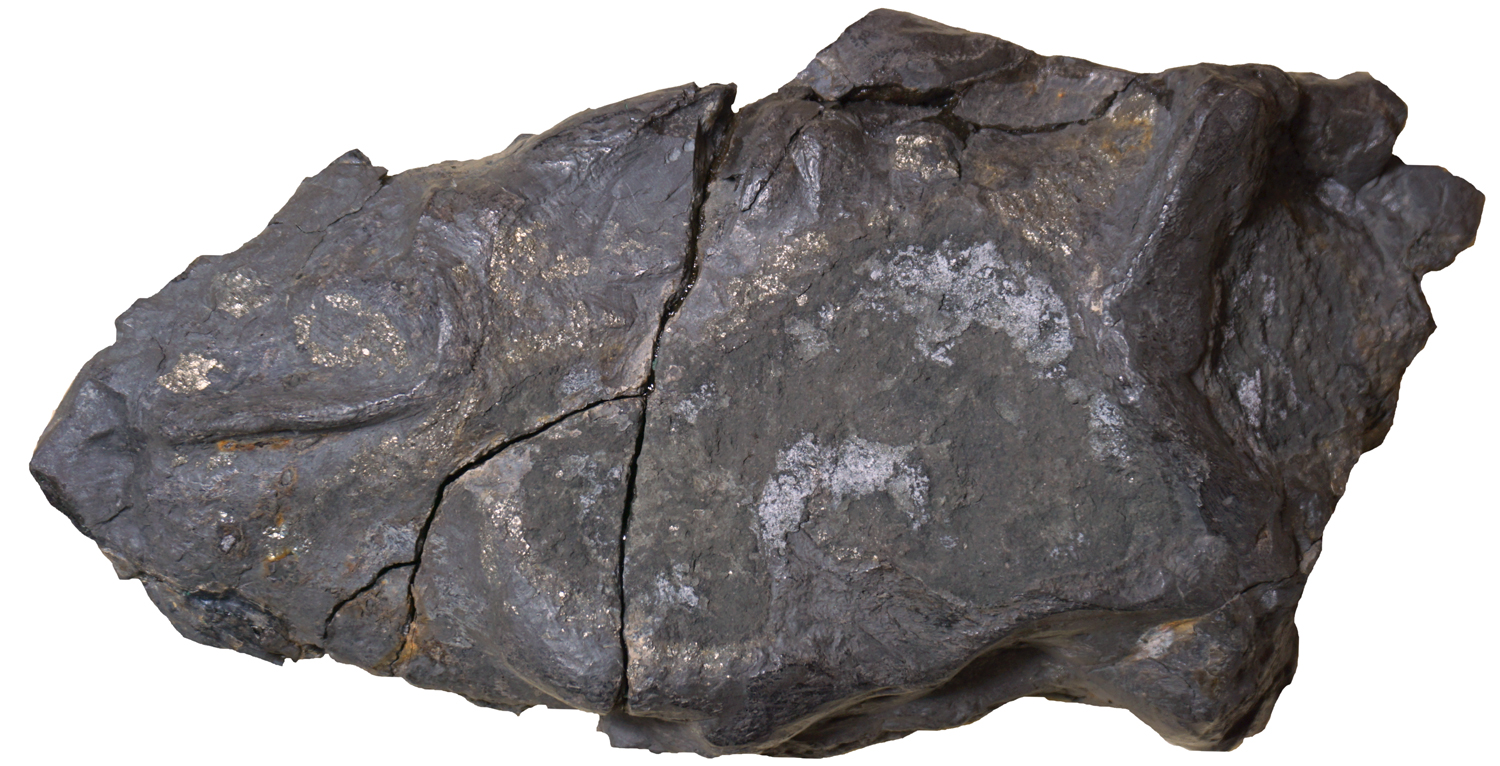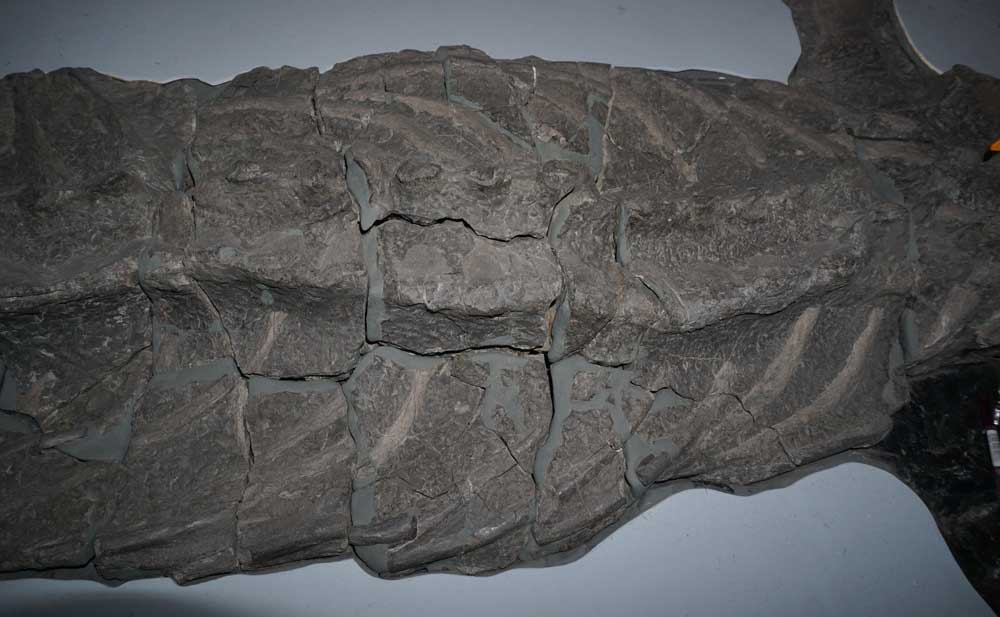Microcleidus macropterus, a Lower Jurassic plesiosaur from the Yorkshire Lias
Microcleidus macropterus is a plesiosauroid plesiosaur from the Lower Toarcian (Yorkshire Lias, Lower Jurassic) Alum Shale Member of the Whitby Mudstone Formation. The taxon is based on a complete and articulated skeleton discovered in 1841 at Saltwick near Whitby in Yorkshire, UK (Smith & Lomax 2019). The Woodwardian Museum (now the Sedgwick Museum of Earth Sciences) of the University of Cambridge acquired the fossil in 1842 (Seeley 1865).
The specimen was first described in 1865 by Harry Govier Seeley (1839-1909) while working at the Woodwardian Museum. Seeley (1865) compared the plesiosaur with species then referred to the genus Plesiosaurus (many of these are now genera on their own) and concluded that it represented a new species, which he named Plesiosaurus macropterus.
The holotype, CAMSM J35182, is now the centrepiece of the Jurassic Marine Reptiles Gallery of the Sedgwick Museum of Earth Sciences. Only the skull is a replica as the original skull is too fragile to be place in the mount.

Plesiosaurus macropterus becomes Microcleidus macropterus
The genus Microcleidus was established by Watson (1909) for plesiosaur specimens from Whitby in Yorkshire and Wellingborough in Northamptonshire. Plesiosaurus homalospondylus, a species established by Owen (1865) for material from Whitby, became the type species. Seeley’s Plesiosaurus macropterus was later referred to the genus Microcleidus by Watson (1911). Some information on the anatomy of Microcleidus macropterus was provided by Seeley (1865) and Watson (1911). Despite being a complete and articulated skeleton, the specimen has only been briefly mentioned in subsequent publications such as Benton & Taylor (1984) or Brown et al. (2013). The most detailed information in a recent publication was given by Smith & Lomax (2019).

In November 2024 I had the opportunity to study the Microcleidus macropterus specimen in Cambridge. Thanks to the generous help of Matt Riley I was able to examine all the elements up close. Unfortunately, the specimen has only been partially prepared and the bones are still largely covered by matrix. This made it difficult to see details and to score the fossil. Nevertheless, I was able to find some interesting anatomical features that will help to understand the phylogenetic relationships of Microcleidus macropterus relative to other plesiosauroids of the Lower Jurassic.

Benton, M. J. & Taylor, M.A. (1983). Marine reptiles from the Upper Lias (lower Toarcian, Lower Jurassic) of the Yorkshire Coast. Proceedings of the Yorkshire Geological Society, 44: 399-429.Brown, D. S., Vincent, P., & Bardet, N. (2013). Osteological redescription of the skull of Microcleidus homalospondylus (Sauropterygia, Plesiosauria) from the Lower Jurassic of England. Journal of Paleontology, 87: 537-549.Owen, R. (1865). A monograph on the fossil Reptilia of the Liassic formations. Part 3. Sauropterygia. Monographs of the Palaeontographical Society, 17(75): 1-40.Seeley, H. G. (1865). On Plesiosaurus macropterus, a new species from the Lias of Whitby. Annals of the Magazine of Natural History, Series 3, 15: 49-53.Smith, A. S. & Lomax, D. R. (2019). 21. Reptiles – Plesiosauria. In. Lord, A. R. (ed). Fossils from the Lias of the Yorkshire Coast. The Palaeontological Association. pp. 332-345.Watson, D. M. S. (1909). A preliminary note on two new genera of upper Liassic plesiosaurs. Memoirs and Proceedings of the Manchester Literary and Philosophical Society, 54: 1-28.Watson, D. M. S. (1911). The Upper Liassic Reptilia, Part III. Microcleidus macropterus (Seeley) and the limbs of Microcleidus homalospondylus (Owen). Memoirs of the Manchester Literary and Philosophical Society, 55: 1-9.WebsourcePortrait of Harry Seeley: Public domain. Link—The study of Microcleidus macropterus is part of the grant project Global drivers of plesiosaur evolution during intervals of intense change in Mesozoic marine ecosystems. National Science Centre, Poland, Grant no. 2023/51/B/NZ8/00899 (awarded to Daniel Madzia, Institute of Paleobiology of the Polish Academy of Sciences).
